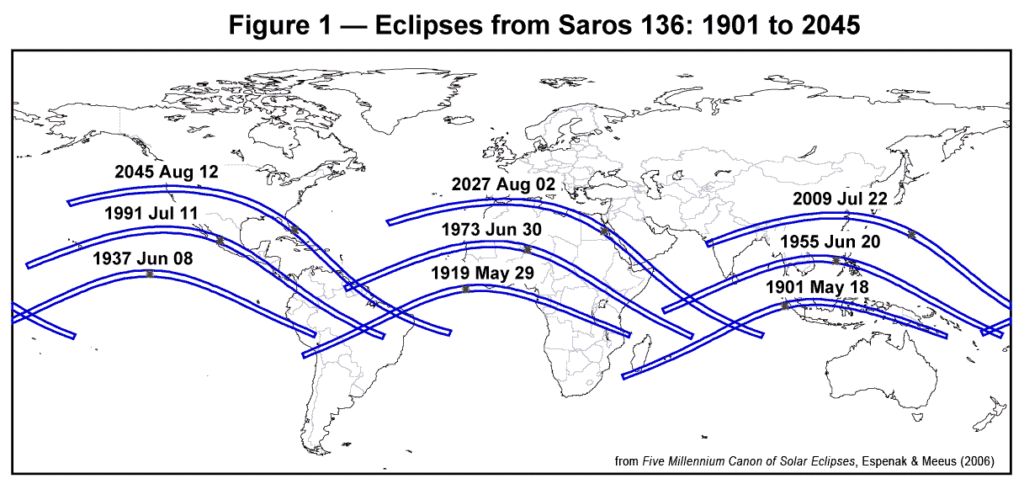By Kevin Matyi
The motion of the moon is what causes eclipses, but the dramatic change in sunlight is what makes them so impressive to observers. But what exactly is happening when the moon passes in front of the sun?
The moon is blocking the sun’s light from reaching Earth, but there is more to the situation than just that. Their relative distance to Earth is one of the most important factors.
The sun is about 400 times farther from Earth than the moon and has a diameter about 400 times larger than the moon. As a result, both the sun and moon (near perigee) appear to be the same size in the sky, allowing the moon to perfectly block out the sun and cast a shadow on Earth during a total eclipse.
The shadow we see while in the path of totality is called the umbra, and the shadow of the surrounding partial eclipse is a penumbra. The shadow from an annular eclipse (when the moon appears smaller than the sun during an eclipse, and so a ring of light is visible around it) is called an anteumbra.
The physics of how each type of shadow is formed is difficult to explain but easy to visualize, so before I tell you about them, here is a picture (technically a ray diagram) of what happens during an eclipse:

Credit: Wikimedia Cmglee
For a total eclipse, the moon has to block out all of the sun’s light. To put the moon in the best position, imagine that a person on Earth is standing under the exact middle of the moon, the centerline of a total solar eclipse.
In this case, light coming from the middle of the sun is clearly going to be blocked by the moon, since it is directly in the way and visible light cannot penetrate rock. The most difficult light to block will be coming from the top and bottom of the sun.
To figure out whether the light will be blocked, a bit of drawing can help. If the light is coming from the exact bottom of the sun and you are wondering if a person can see the light while under the exact center of the moon, draw a line between where the light starts and the person’s eyes.
Does the moon get in the way of the line? If yes, then the person is experiencing a total solar eclipse. None of the sun’s light can get past the moon, so the sun is fully blocked.
If the answer is no, but the person is still standing under the center of the moon, then they are in an annular eclipse. The moon is in the perfect position to block all of the sun’s light, but it still fails to do so. In this case, it will appear to be a large black circle with a ring of sunlight called an annulus around it.
A partial eclipse is the most difficult to explain, since it has the most variability. All but a sliver of the sun may be blocked, or the moon can barely cover any of the sun. In general though, a partial solar eclipse happens when the moon is not quite directly between the observer and sun, but is still in the way of some sunlight.
You can use the same process for determining whether a person is experiencing a total solar eclipse to figure out if they are in the penumbral shadow of the moon. A slight complication is that the moon is off center, so it matters more where the origin point of the light is.
If the person is standing a little north of the moon’s center, then the line from origin to person should start from the sun’s southernmost point, the bottom, since the northern light is less likely to be blocked due to the moon being a bit more to the south from the person’s perspective.
If any of the sun’s light is blocked by the moon, then the person is experiencing a partial solar eclipse. The limit of this blockage, where only the slightest amount of sunlight is blocked, is the edge of the penumbra shadow.
If the moon is not blocking any light, then the moon may be close to the sun but there is no eclipse happening on that spot of Earth.






